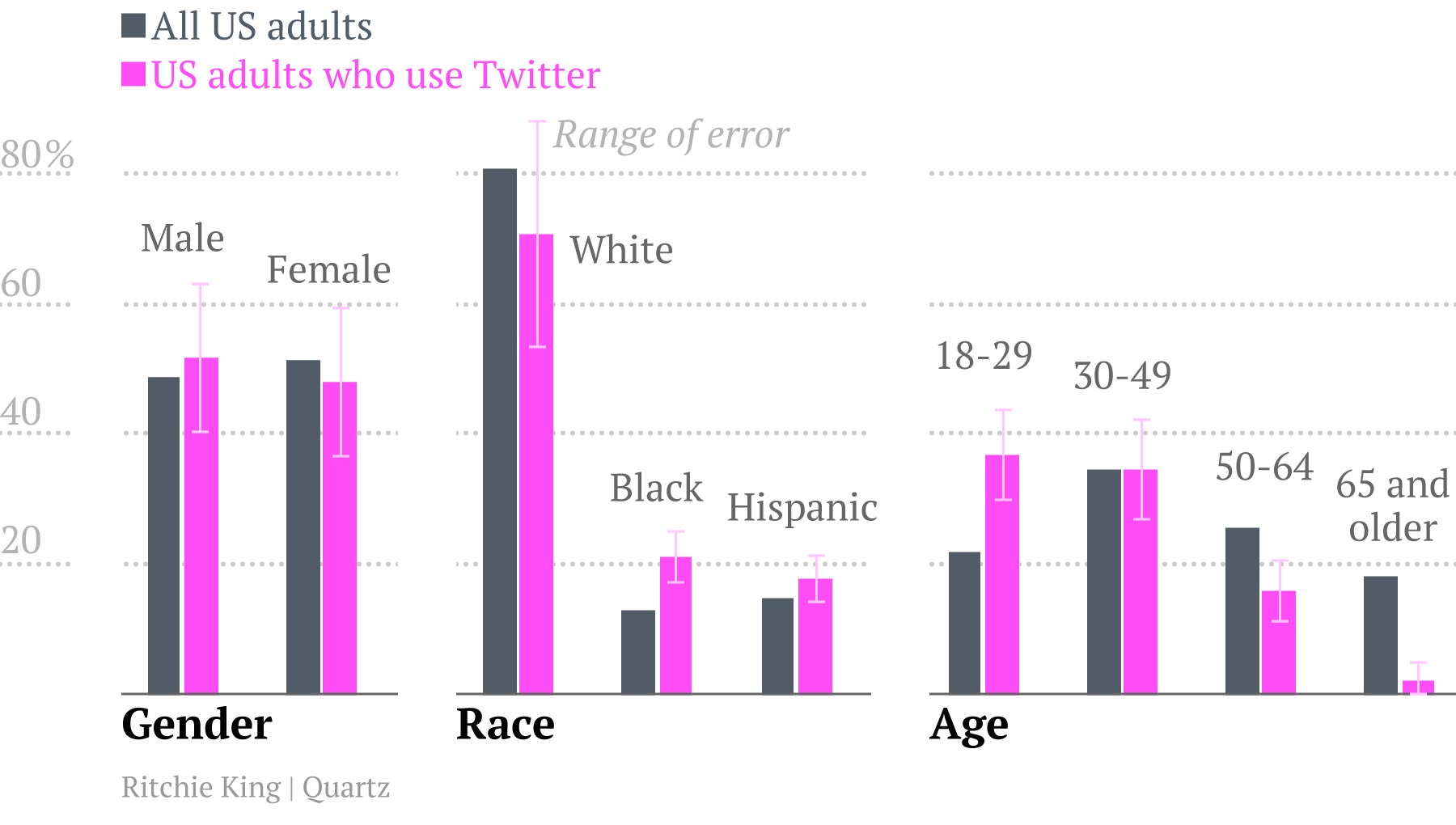The difference between Twitter and the rest of America
It’s tempting to use Twitter as an informal barometer of public opinion. Surely the constant torrent of often spontaneous, 140-character dispatches coming from millions of people should provide an incredible window into what people are really thinking.

It’s tempting to use Twitter as an informal barometer of public opinion. Surely the constant torrent of often spontaneous, 140-character dispatches coming from millions of people should provide an incredible window into what people are really thinking.
The problem is that the composition of Twitter users isn’t the same as that of the population at large, according to a recent study by the Pew Research Center (pdf). As the chart above shows, US adults who use Twitter tend to be younger and less white. They also live, disproportionately, in urban areas.
Given this difference in demographics, it’s not surprising that the political opinions expressed on Twitter tend to be more liberal than those held by the rest of the US. For example, 77% of Twitter users who commented on US president Barack Obama’s reelection this past November had positive things to say about it. But only 52% of Americans reported being happy about Obama’s victory in a survey conducted around the same time.
Of course, demographics aren’t the only thing at play here. Whenever you mine Twitter for public opinion about an issue, you’re only hearing from a subset of Twitter users—those who feel compelled to speak up. And the loud have always been an influential group.